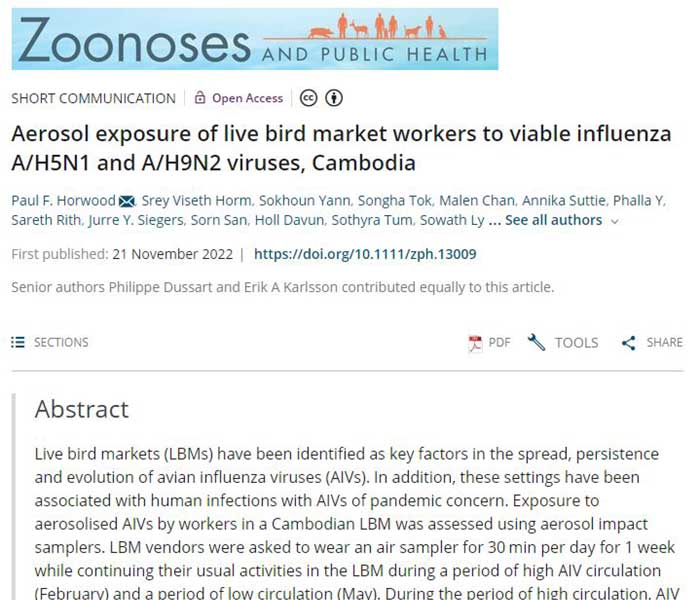Study demonstrates the increased risk of aerosol exposure of Live Bird Markets workers to avian influenza viruses
Live bird markets (LBMs) have been identified as key factors in the spread, persistence and evolution of avian influenza viruses (AIVs). In addition, these settings have been associated with human infections with AIVs of pandemic concern. Exposure to aerosolised AIVs by workers in a Cambodian LBM was assessed using aerosol impact samplers. During the period of high circulation, AIV RNA was detected from 100% of the air samplers using molecular methods and viable AIV (A/H5N1 and/or A/H9N2) was isolated from 50% of air samplers following inoculation into embryonated chicken eggs. In contrast, AIV was not detected by molecular methods or successfully isolated during the period of low circulation. This study demonstrates the increased risk of aerosol exposure of LBM workers to AIVs during periods of high circulation and highlights the need for interventions during these high-risk periods. Novel approaches, such as environmental sampling, should be further explored at key high-risk interfaces as a potentially cost-effective alternative for monitoring pandemic threats.
This publication is the results of a study from the Virology Unit and the Epidemiology and Public Health Unit at the Institut Pasteur du Cambodge as well as the field teams from the National Animal Health and Production Research Institute (Cambodian Ministry of Agriculture, Forestry and Fisheries).
To read the publication


